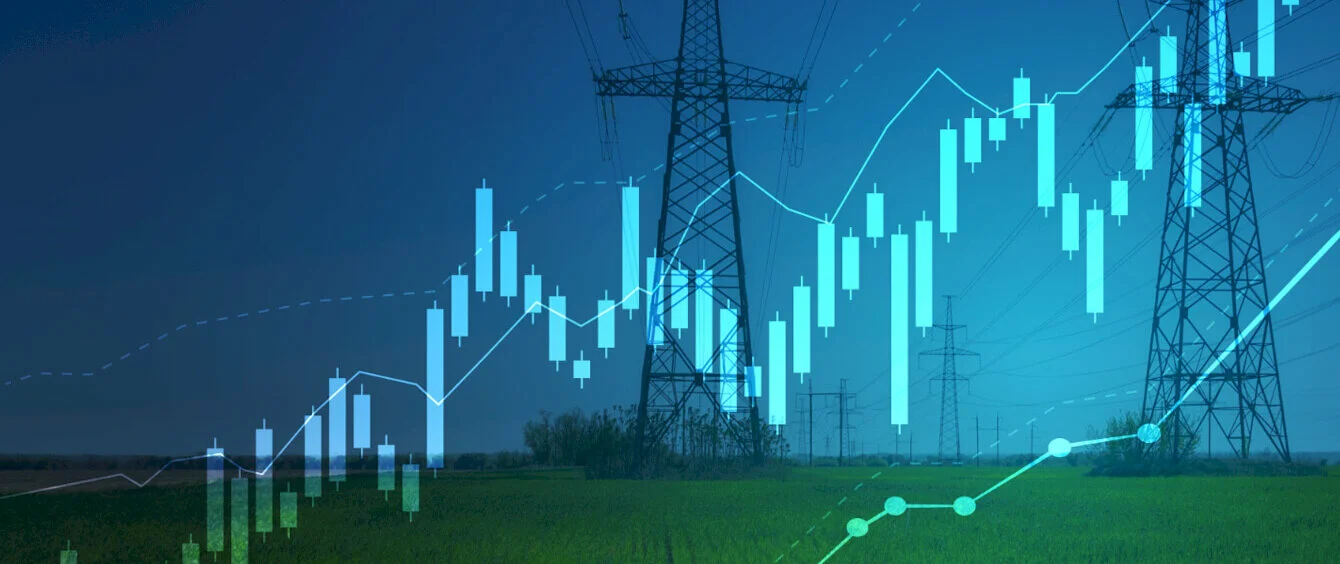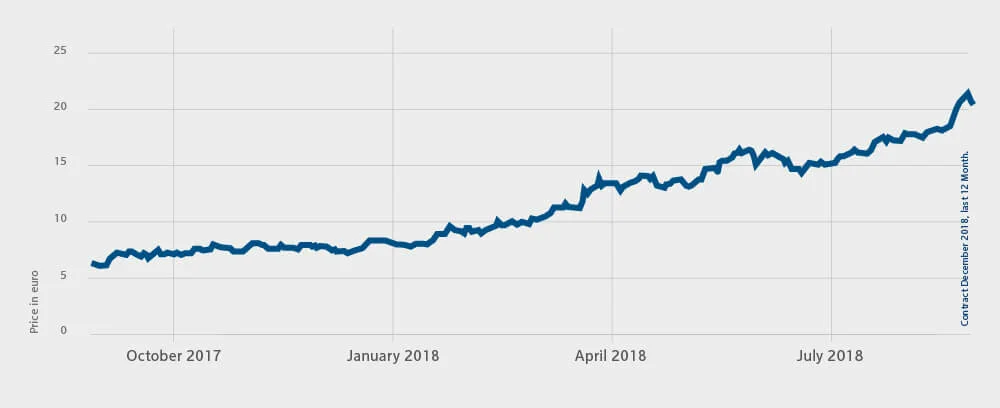The price of emission allowances in EU emissions trading has tripled in recent months. The objective of gradually reducing the supply of certificates is to effectively lower greenhouse gas emissions. Moreover, the increase in emission allowance prices caused electricity prices to record new highs on the energy exchange. Experts are of the opinion that one must brace oneself for higher electricity prices over the long term.
Media coverage has increased on one topic in the last few days: the electricity prices on the Leipzig Energy Exchange (EEX). The price of a megawatt hour of base-load power for delivery next year rose to over 50 euros. According to the German business periodical Handelsblatt, the last time it was this high was six years ago. The newspaper is quoted as stating that the price increased by 17 euros per megawatt hour.
New framework for European emissions trading
According to energy expert Angela Pietroni, Senior Manager at analyst firm Energy Brainpool in Berlin, in an interview with Handelsblatt (German only), the European Emissions Trading System (EU ETS) is mainly responsible for this. Operators of coal and gas power plants have to purchase certificates for every metric ton of carbon dioxide resulting from generating electricity. And, all of a sudden, they have become quite expensive. Since the beginning of the year, they have risen in price from 7.50 euros to over 21 euros per metric ton.
There are several years for this: A new framework for European emissions trading, which was introduced in 2005, was established last November. One of the new conditions is an annual cap on the amount of CO2 certificates which power producers and industrial plants can use to cover their carbon dioxide emissions. It is envisaged that this limit will drop by 2.2 percent every year, as opposed to the 1.74 percent decline witnessed at present and since 2013. The European Commission believes that reducing the supply of certificates is an effective way of bringing about a decline in greenhouse gases. The EU aims to lower these emissions by 40 percent by 2030 compared to the 1990 level.
In an article on the EU ETS (German only), the Swiss newspaper Neue Züricher Zeitung thus emphasises that “the great advantage of emissions trading is that CO2 savings can be achieved throughout the EU wherever this can be done in the cheapest possible manner. One may be of the opinion that the cap is too high, but this has nothing to do with a failure of this tool itself. This is why national insular solutions are a bad idea.”
Heat wave another cause of higher electricity prices
The hot summer and higher coal prices are another reason for the mounting electricity price. For instance, it was above all hard coal and nuclear power stations that had to ramp down output during the hot weather spell. Furthermore, the lengthy period of high pressure weather drove down wind speeds. Electricity prices have constantly been growing since 2016, and I’m convinced that we have to brace ourselves for higher electricity prices in the long run as well,” Pietroni summarises.
Photo credits: ml1413, shutterstock.com; wanpatsorn, shutterstock.com

